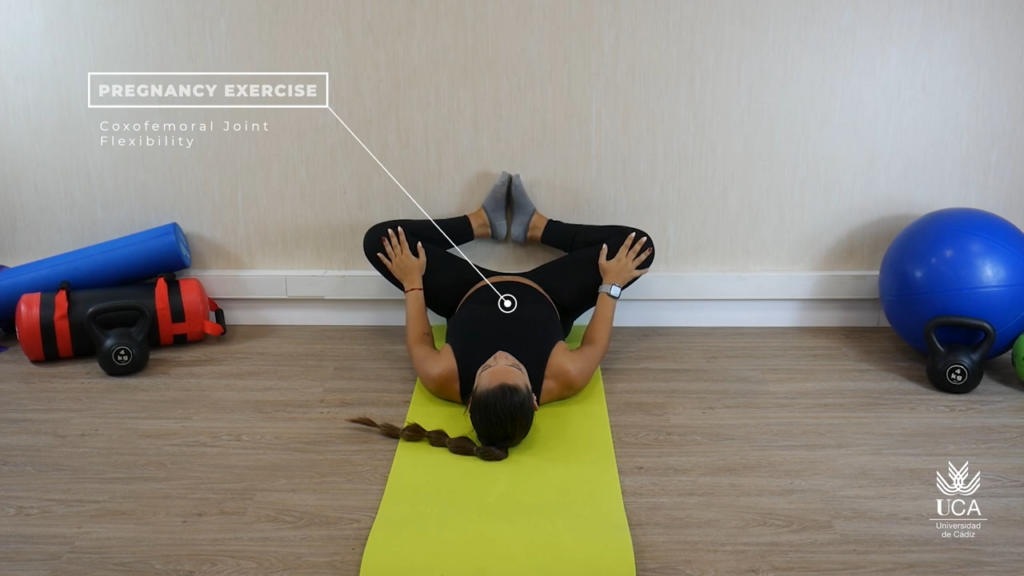Pregnancy and childbirth change the myofascial system in a woman’s body for a long time. Hormonal changes that reduce the tension of the ligaments (mainly to facilitate the delivery itself, but also to adapt to the growing belly of the baby) remain in the woman’s body for several months after delivery, mainly for reasons of breastfeeding. Therefore, during this period, the musculoskeletal system is particularly susceptible to adopting and maintaining an incorrect standing or sitting posture, but also to too intense exercise that is not adapted to the breastfeeding mother’s body (1).
After childbirth, many women have postural problems (e.g., pelvic tilt, deepening of the lumbar lordosis, lateral displacement of the trunk, rotational position of the lower limbs, or hyperextension of the knee joints). According to Professor Janda, any postural disorder affects the maintenance of muscular balance and causes muscular imbalance, which consists in shortening and overusing some muscles and weakening others. This situation, in turn, affects the development of pain or, for example, the proper functioning of the pelvic floor muscles. A good example is the adjustment of the tone of the posterior muscle group of the lower extremities. The body balances the increasing weight of the child and shifts the center of gravity forward, which leads to an increase in the resting tension of the muscles of the posterior myofascial ligament, i.e., the muscles of the posterior part of the lower limbs. This is important for the functioning of the mother after birth, because the persistent imbalance of muscle tension can cause pain, for example, in the lumbar spine. Similarly, breathing patterns and the position of the diaphragm, whose movement is restricted during pregnancy. This is why breathing exercises, including manual work on the costal spine and sternoclavicular joints, are so important in the treatment of postpartum women (2). The main goal of postpartum training is to improve movement stereotypes and muscular imbalances, and then reduce muscle mass and sculpture (I leave out here the mothers who were physically active before childbirth, know their body and how it should look right in the “field of gravity”). The choice of exercises must be correlated with the existing disorders and clinical problems reported by the patient. The exercises should consolidate the manual processes and it can be said that they have a kind of corrective character. If you perform typical strengthening exercises without first removing the excessive muscle tension, this can lead to the movement patterns turning into pathological patterns. These, in turn, lead to even greater dysfunction within the joint, creating pain, overuse, and incorrect use during movement. Scars from a caesarean section or episiotomy, problems with urinary incontinence, pelvic or shoulder girdle pain, straight abdominal muscles, any of these problems will greatly affect the course of therapy and the selection of proper exercises. Contrary to appearances, postpartum women are not a homogeneous group that can be divided into women after physiological delivery and women after caesarean section – there are a number of additional factors that must be taken into account when programming the rehabilitation process (3).
Hormonal imbalance contributes to damage of muscular-postfascial tissue and leads to changes in the structure of collagen and elastin fibers. This leads to changes in biomechanical properties such as tissue stiffness and elasticity. When hormone levels in the extracellular matrix are high, as is common at the peak of ovulation or during pregnancy: collagen type III increases to 6.8% during ovulation and 6.7% during pregnancy, similar to fibrillin-1, which increases to 3.6% during pregnancy. Collagen type I, on the other hand, decreases to 1.9%. The result is softer, more flexible myofascial tissue, which may be the source of pain (4). In addition, estrogen and relaxin play a key role in remodeling the extracellular matrix by inhibiting fibrosis and inflammatory activity, which are important factors in fascial stiffness and sensitization of fascial nociceptors (5).
Grzegorz Jędrzejewski
References:
- Marnach ML, Ramin KD, Ramsey PS, Song SW, Stensland JJ, An KN. Characterization of the relationship between joint laxity and maternal hormones in pregnancy. Obstet Gynecol. luty 2003;101(2):331–5.
- Ehsani F, Sahebi N, Shanbehzadeh S, Arab AM, ShahAli S. Stabilization exercise affects function of transverse abdominis and pelvic floor muscles in women with postpartum lumbo-pelvic pain: a double-blinded randomized clinical trial study. Int Urogynecology J. styczeń 2020;31(1):197–204.
- Bø K, Nygaard IE. Is Physical Activity Good or Bad for the Female Pelvic Floor? A Narrative Review. Sports Med Auckl NZ. marzec 2020;50(3):471–84.
- Fede C, Pirri C, Fan C, Albertin G, Porzionato A, Macchi V, i in. Sensitivity of the fasciae to sex hormone levels: Modulation of collagen-I, collagen-III and fibrillin production. PloS One. 2019;14(9):e0223195.
- Fede C, Albertin G, Petrelli L, Sfriso MM, Biz C, De Caro R, i in. Hormone receptor expression in human fascial tissue. Eur J Histochem EJH. 2 listopad 2016;60(4):2710.




